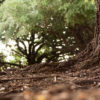What Should I Do If My Live Oak Has Aphids?

Aphids are attracted to many different species of trees, but are most commonly seen in North Texas on crape myrtles, pecans, hackberries, and live oaks.
Aphid infections typically occur on trees that are already stressed and unhealthy. Weakened trees are more susceptible to diseases and infestation.
While an active aphid infestation can cause unsightly mold growth the effects on large trees like live oaks are minimal. Once the aphids die off, any secondary issues, such as mold, will clear up.
Only Treat Aphids in the Spring
Why do we recommend only treating for aphids in the spring?
- Spring is when aphids hatch from the eggs that were laid in the fall. Aphids are visible and can be treated. This is when they are most active.
- Summer the temperatures reach above 85° and treatments like neem oil will fry the tree and cause more damage.
- Fall is when aphids lay eggs and are not easily visible to treat.
- Winter is when eggs begin to form and are not easily visible to treat.

Identify the Signs of Aphid Infestation
Before you can address the problem, you need to confirm aphid presence. During spring look for these signs:
- Curled leaves
- Yellow foliage
- Honeydew – sticky substance beneath tree
- Sooty mold
- Bees, wasps, or ants gathering at the tree.
Why do Aphid Infestation Symptoms Vary?
Aphids are small and may go unnoticed until they have already proliferated in large numbers. Weather in North Texas in spring is the perfect climate for aphid populations to balloon because they prefer wet and humid conditions.
Depending on when you notice infestation effects of the different stages of the aphid life cycle will be present. Weather in North Texas in spring is the perfect climate for aphid populations to balloon. They prefer wet and humid conditions.
In spring once the eggs have hatched the young aphids called nymphs eat their host (tree) and use their long sucker to pull nutrients from the leaves. As the nymphs eat through the leaves it causes them to curl and become discolored.
Honeydew, the sticky substance you find underneath trees is the waste aphids produce after consuming the sap from the tree.
Sooty mold often grows on the honeydew these pests leave behind. The mold can create a black film over your tree or plants nearby.
If you notice bees, wasps, or ants gathering around your tree, it’s worth investigating further as these insects are attracted to the honeydew excreted by aphids.
Assess the Situation and Determine the Severity
Check your live oak thoroughly to determine how widespread the infestation is. Best practice guidelines do not recommend using chemical controls when aphids are feeding (producing honeydew). Introducing natural aphid predators can help reduce the population.
Consider environmental factors that may influence aphid activity. This years winter in North Texas has been a combination of record breaking cold snaps with warm bursts. This large fluctuation in temperature creates conditions ripe for aphid proliferation. Meanwhile, natural predators may not have had a chance to populate.
Apply a Strong Stream of Water
A simple and effective first step is to spray the aphids off your tree using a strong stream of water. This can physically remove many aphids and reduce their numbers significantly. This method is particularly useful for minor infestations where physical removal can help control the population before they grow out of control.
Using water to dislodge aphids from leaves does not harm the tree or surrounding beneficial insects. It’s a gentle, eco-friendly first line of defense. Regular rinsing can slightly alter the aphid population, giving your tree a chance to recover. However, be cautious not to damage delicate leaves.
Ensure you target both the upper and lower sides of the leaves, as aphids can steadfastly cling to these surfaces. If you’re dealing with aphids high in the tree, consider using a nozzle that can increase the reach of your garden hose.
Introduce Natural Predators
Encourage or introduce natural predators like ladybugs or lacewings to your garden. These insects feed on aphids and can help control their population naturally. Ladybugs, for example, are voracious aphid eaters, consuming about 50 aphids a day. Releasing these predators near infested areas offers a sustainable solution for pest management.
Creating a habitat that attracts these beneficial insects can enhance your garden’s natural defenses. Planting a variety of nectar-producing flowers can sustain natural predators throughout their lifecycle, allowing them to be an ongoing part of your pest control strategy. Some of these predators are active in different seasons, offering year-round aphid control.
Use Insecticidal Soap or Neem Oil
For more severe infestations, consider using insecticidal soap or neem oil. These treatments can be effective in controlling aphids without harming beneficial insects when applied correctly.
Insecticidal soaps work by stripping away the protective coatings from aphids and dehydrating them. Neem oil, on the other hand, disrupts the hormonal balance in insects, hindering their ability to feed and reproduce effectively. Both methods are less toxic solutions compared to chemical pesticides, ensuring a safer environment for helpful garden organisms.
Drawbacks from Using Insecticidal Soap or Neem Oil
Do not us neem oil when temperatures are above 85° because this will burn the tree. Timing is critical for effective use.
Insecticidal soaps can be very messy to use and also need to be timed. Rain, or even sprinklers can wash off the soap diminishing its effectiveness.
Severe Aphid Infestation
There are several chemical insecticides that target aphids. These products generally break down into two categories: systemic and non-systemic. These insecticides do not work in the Fall and must be applied in the winter for spring aphid control.
Systemic insecticides
- Management timing is essential and will need two applications for it to work.
- Should be applied prior to growing season or anticipated increase in pest activity
- Absorbed into the the plant they are applied to and transported throughout the plant’s structure
- Peak results show 30-45 days after with imidacloprid
Non-systemic insecticides
- Spray’s will kill what ever it hits within 24-48 hrs
- Cling to the surface of treated plants and are effective immediately but are at risk of dilution from rain or sprinklers.
- Difficult to apply to large trees, like live oaks due to environmental contamination
Maintain Regular Monitoring and Care
Continue to monitor your live oak regularly. Maintaining good tree health through proper watering, pruning, and fertilization will help prevent future infestations. A tree in robust health is better equipped to resist pests and recover from any infestations naturally.
Regular assessments with a certified arborist will also enable you to take quick action should the insect population begin to spike again.
Addressing nutrient deficiencies can enhance a tree’s natural defenses, making it less appealing to aphids and more resilient to threats.

At Texas Tree Surgeons, we love trees and we love our community! Managing aphids on live oaks requires just some friendly lady bug predators. Do not waste money or time on chemical applications. We hope that spreading the word about the current aphid issue will help put tree owners’ minds at ease. We offer year-round plant health care programs that can help make sure your trees are prepared to handle issues at any time and bounce back from damage and stress. Ask one of our certified arborists to evaluate your trees today!
Related Blogs
Similar blogs related to this topic


Emerald Ash Borer (EAB): What Communities Need to Know and Do Now
The Emerald Ash Borer (EAB), an invasive beetle from Asia, has become one of the most destructive forest pests in North America—and it’s no longer a future threat for North Texas. It’s here, and it’s…
Read more

9 Essential Questions to Ask an Arborist Before Hiring
Hiring an arborist can be a daunting task, especially when your trees mean the world to you. This guide aims to simplify the process by outlining the key questions you should ask a potential arborist…
Read more

Hail Damage and Trees
Beware of hail damage on your tree. If your tree is severely damaged from hail do not stand under the drip line (canopy) until it has been professionally assessed by a TRAQ certified arborist and…
Read more
